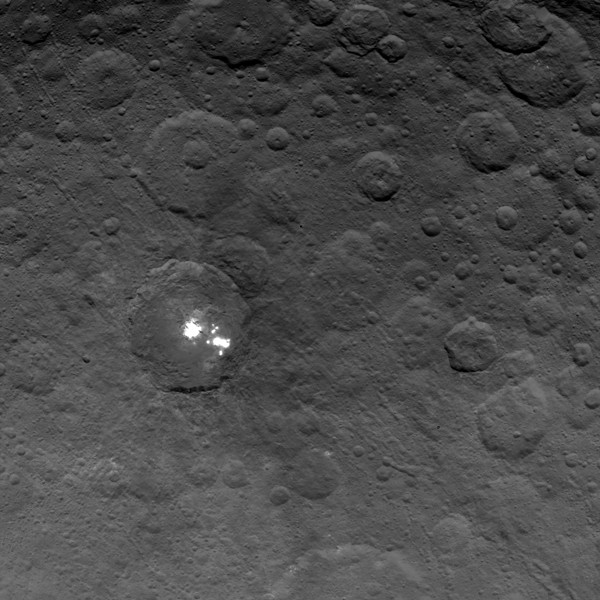Scientists are continuously mystified with dwarf planet's Ceres bright spots where NASA confirms that a cluster of the bright spots are joining two other bright regions.
This latest image was captured by NASA's Dawn spacecraft on June 6, Saturday where the two main large bright spots are being surrounded by several smaller bright white dots.
The Dawn mission was launched in 2007 to explore protoplanets lurking in our solar system, namely asteroid Vesta and dwarf planet Ceres which are the two largest bodies found in the asteroid belt between Mars and Jupiter.
Dawn also became the first probe to explore a dwarf planet where this newest image reveals an unprecedented view of the strange bright spots from the probe with a distance of 2,700 miles above Ceres. This is also one of the first series of photos that was beamed back from the second mapping orbit of the mission.
The largest bright spot apparently measures 55 miles across where program managers and the mission control team are perplexed as how these bizarre, highly reflective features formed on the surface of Ceres.
According to principal investigator Chris Russell from the University of California, Los Angeles, this configuration of bright spots makes Ceres unique in the solar system where the team is still deciphering the source of these lights. However, scientists believe that these could be ice or salt reflecting from the surface.
NASA also presented a public poll, asking people what their take on the origin of those bright spots on Ceres where participants can answer a survey and choose from volcanoes, geysers, rocks, ice or salt or other materials.
To date, 40 percent of the respondents from the survey answered that the bright spots are made from other materials. Most also answered ice from three out of ten votes making rocks the least popular choice that is selected by only six percent of the respondents.
By the end of June, Dawn spacecraft will now begin to travel into lower orbit of Ceres, some 900 miles over the surface where this will be achieved in early August 2015.



























